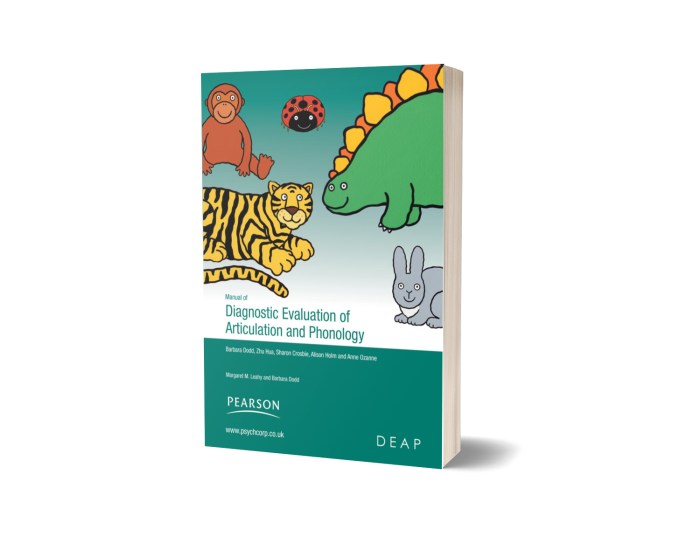Diagnostic evaluation of articulation and phonology is a critical step in the assessment and treatment of speech sound disorders. By understanding the differences between articulation and phonology and the various types of disorders that can affect these areas, speech-language pathologists can develop individualized treatment plans to help individuals achieve their communication goals.
This guide will provide an overview of the diagnostic evaluation process, including the different types of tests that are used to assess articulation and phonology, as well as the importance of a comprehensive evaluation. We will also discuss the different types of treatment approaches that are available and the role of the speech-language pathologist in the treatment planning process.
1. Articulation and Phonology: Diagnostic Evaluation Of Articulation And Phonology

Articulation and phonology are two closely related but distinct aspects of speech production. Articulation refers to the physical production of speech sounds, while phonology refers to the mental representation and organization of speech sounds in the brain.
Articulation disorders are characterized by difficulty producing speech sounds correctly. Phonological disorders are characterized by difficulty organizing and using speech sounds in a meaningful way.
Types of Articulation and Phonological Disorders, Diagnostic evaluation of articulation and phonology
- Articulation disorders:These disorders can affect any of the speech sounds, and can range from mild to severe. Some common types of articulation disorders include:
- Dysarthria:This is a motor speech disorder that affects the muscles used for speech production. It can be caused by a variety of neurological conditions, such as stroke, Parkinson’s disease, and cerebral palsy.
- Apraxia of speech:This is a neurological disorder that affects the planning and execution of speech movements. It can make it difficult to produce speech sounds correctly and fluently.
- Childhood apraxia of speech:This is a developmental disorder that affects the ability to produce speech sounds correctly. It is often associated with other developmental delays, such as language delay and motor coordination problems.
- Phonological disorders:These disorders are characterized by difficulty organizing and using speech sounds in a meaningful way. Some common types of phonological disorders include:
- Phonological delay:This is a developmental disorder that affects the ability to produce speech sounds correctly. It is often associated with other developmental delays, such as language delay and motor coordination problems.
- Phonological disorder:This is a speech sound disorder that is not associated with any other developmental delays. It can be caused by a variety of factors, such as genetics, environmental factors, and neurological factors.
FAQ Summary
What is the difference between articulation and phonology?
Articulation refers to the production of individual speech sounds, while phonology refers to the system of rules that govern how speech sounds are combined to form words.
What are the different types of articulation disorders?
There are two main types of articulation disorders: phonological disorders and motor speech disorders. Phonological disorders are characterized by difficulty producing speech sounds correctly, while motor speech disorders are characterized by difficulty coordinating the muscles used to produce speech.
What are the different types of phonology disorders?
There are three main types of phonology disorders: substitution errors, omission errors, and distortion errors. Substitution errors occur when one sound is substituted for another, omission errors occur when a sound is left out, and distortion errors occur when a sound is produced incorrectly.


